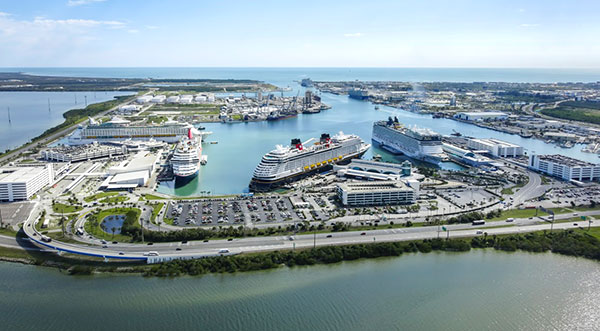Innovations in Space Technology
By Space Coast Daily // February 1, 2024

Space technology has always fascinated humanity, offering endless possibilities for exploration and discovery. Over the years, significant advancements have been made in this field, leading to groundbreaking innovations that have transformed our understanding of the universe.
From satellite technology to robotics and propulsion systems, space technology continues to push the boundaries of what is possible. In this article, we will explore the historical overview of space exploration, the importance of space technology innovations, and the impact of these innovations on everyday life.
Historical overview of space exploration
The journey of space exploration began with the launch of the first artificial satellite, Sputnik 1, by the Soviet Union in 1957. This marked the beginning of the Space Age and ignited a global race to explore the cosmos. The subsequent manned missions, such as Yuri Gagarin’s historic orbit around the Earth in 1961, and the Apollo moon landings in the late 1960s and early 1970s, captured the world’s imagination and expanded our understanding of space.
Importance of space technology innovations
Space technology innovations have far-reaching implications, extending beyond the realms of scientific exploration. Satellites, for instance, play a crucial role in communication, weather forecasting, and navigation systems. They enable us to stay connected with people across the globe, accurately predict weather patterns, and navigate unfamiliar territories with ease. Moreover, space technology has also revolutionized the fields of agriculture, disaster management, and national security, providing valuable insights and tools for addressing global challenges.
Advancements in satellite technology
Satellite technology has undergone significant advancements in recent years, enhancing our capabilities in various domains. The miniaturization of satellites has led to the deployment of large constellations, enabling improved internet connectivity and global communication networks. Additionally, high-resolution imaging satellites have revolutionized Earth observation, allowing scientists to monitor changes in land use, deforestation, and urbanization with unprecedented detail. These advancements have paved the way for better resource management, disaster response, and environmental monitoring.
Role of robotics in space exploration
Robotics has played a critical role in space exploration by enabling tasks that are too dangerous or impractical for humans to undertake. Robotic rovers, such as NASA’s Mars rovers, have provided invaluable insights into the geology and potential habitability of other planets. These autonomous machines can traverse challenging terrains, collect samples, and transmit valuable data back to Earth. Furthermore, advancements in artificial intelligence have empowered robots to make complex decisions in real-time, expanding their capabilities and potential for future space missions.
Breakthroughs in propulsion systems
Propulsion systems are crucial for space exploration, allowing spacecraft to overcome the Earth’s gravity and travel vast distances. Recent breakthroughs in propulsion technology have opened up new possibilities for space missions. Electric propulsion systems, such as ion thrusters, offer high efficiency and long operational lifetimes, making them ideal for deep space exploration. Furthermore, the development of reusable rockets, exemplified by SpaceX’s Falcon 9, has significantly reduced the cost of space travel, making it more accessible and economically viable.
Emerging trends in space communication
Space communication is essential for transmitting data between spacecraft and Earth, enabling real-time monitoring and control. Emerging trends in space communication aim to enhance the efficiency, reliability, and capacity of data transmission. One such trend is the use of laser communication systems, which offer higher data rates compared to traditional radio frequency systems.
Moreover, the implementation of inter-satellite communication networks can enable seamless connectivity between satellites, reducing reliance on ground-based infrastructure and increasing the robustness of space missions. Additionally, incorporating a band pass filter improves signal clarity by allowing specific frequencies to pass and attenuating others, enhancing the signal-to-noise ratio and overall transmission reliability.
Space technology and climate change monitoring
Space technology plays a pivotal role in monitoring and understanding climate change. Satellites equipped with advanced sensors can collect valuable data on greenhouse gas emissions, temperature variations, and changes in ice cover. This data is crucial for climate scientists and policymakers in assessing the impact of human activities on the environment and formulating effective mitigation strategies. Furthermore, space-based monitoring systems enable the early detection of natural disasters, such as hurricanes and wildfires, facilitating timely response and minimizing the potential damage.
Impact of space technology on everyday life
Space technology has a profound impact on our everyday lives, often in ways that go unnoticed. From GPS navigation systems guiding us to our destinations to weather forecasts helping us plan our activities, space-based services have become an integral part of modern society. Additionally, space technology has revolutionized industries such as telecommunications, broadcasting, and agriculture, enabling global connectivity, efficient communication, and precision farming techniques. Moreover, advancements in materials science, inspired by space exploration, have led to the development of lightweight and durable materials used in various consumer products.
“Space technology is crucial for monitoring and protecting the health of our planet. Satellites provide a unique viewpoint for tracking climate change, evaluating the effects of natural disasters, and managing vital resources. In the face of urgent global environmental issues, data and insights obtained from space have become indispensable for making informed decisions and promoting sustainable resource management.” Michael Chen, Head of Growth of Notta
“Space technology has had a significant influence on healthcare, particularly through advancements like advanced medical imaging, remote surgeries, and telemedicine that have emerged from space-related technologies. These innovations have not only improved access to healthcare but have also transformed the way we diagnose and treat medical conditions, leading to overall better well-being for people worldwide.” Bradley Fry, Owner of PinProsPlus
“Undoubtedly, space technology has revolutionized our daily lives. A prime example is the GPS system, which has become essential in transportation, agriculture, and various industries. Satellites in orbit play a vital role in ensuring the efficient functioning of our world by providing crucial data and connectivity that form the foundation of modern society’s operations and convenience.” – Casey Jones, Founder & Head of Marketing of CJ&CO
Future possibilities in space technology
The future of space technology holds immense possibilities for further innovation and exploration. With the rise of commercial space companies and increased international collaboration, we can expect more ambitious missions to Mars, the Moon, and beyond. Advancements in artificial intelligence, robotics, and virtual reality will enable more complex and autonomous space missions. Moreover, the development of advanced propulsion systems, such as nuclear propulsion and antimatter engines, could revolutionize deep space travel and open up new frontiers for human exploration.
Conclusion
Innovations in space technology have transformed our understanding of the universe and revolutionized various aspects of our lives. From the historical milestones of space exploration to the advancements in satellite technology, robotics, propulsion systems, and communication, space technology continues to push the boundaries of what is possible. The impact of space technology extends beyond scientific research, with its applications ranging from everyday conveniences to addressing global challenges such as climate change. As we look to the future, the possibilities for space technology are limitless, offering exciting opportunities for further innovation and discovery.
CTA: To learn more about the latest advancements in space technology and stay updated with the latest news and breakthroughs, subscribe to our newsletter or follow us on social media. Explore the wonders of the cosmos and join us in the journey of space exploration.












